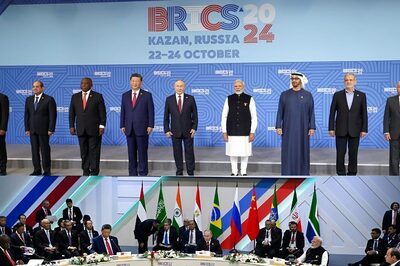
views
In the history of every art, including literature, it is found that there are certain periods, during which, the art has flourished and reached heights of excellence, not approached during other periods.
Carnatic music comprised the latter half of 18th and first half of the 19th centuries. This period was considered to one of the glorious periods. It was during this period that masters like Thyagaraja, Muthuswamy Dikshitar, Shyama Sastri (Musical Trinity), Maharaja Swati Thirunal, Thodi Seetharamaiah, Govindamarar, Vadivelu Brothers, Arunachala Kavi and others lived. This period was verily called the golden age of Carnatic music.
There was no doubt that Thyagaraja (1767 – 1847) was the greatest among music composers of South India and one of the musical prodigies of all times. He was the father of modern Carnatic music. His works are of delicate spirituality, melodic beauty and art. Even as a child he was remarkable as he was fond of music and had the gift of composing. He wrote his first song when he was about 13 years old. Soon after this he reached the pinnacle of musical fame and composed the grandest of songs and two musicals. He was instrumental in revolutionising the Carnatic music scene in South India. Today, his songs are touted as the most adequate interpretation of classical Carnatic music from both the music and the sahitya point of views.
There is no doubt that Thyagaraja was a great river, into which the noblest traditions of music, bhakti and renunciation flowed.
Muthuswamy Dikshitar, who was a rare combination of a scholar, master, and a sadhaga, scaled new heights in the harmony of Sangeetha and Sahitya and their many dimensional beauties.
While Shyama Sastri had a rhythmical frame of mind and was always swimming in the eternal regions of rhythm and thala prasthara. The great creative artist that he was, the architect of musical form Swarajathi. Sastri converted it into an attractive musical form, though it was originally a dance framework by eliminating passages of jathis, which stood unparalleled, both in delineation of Raga Bhava and fecundity of musical ideas.
There is no doubt that a new chapter in the history of South Indian music, was written by the musical trinity, in whose hands Sangeetha Kavitha (music creativity) reached the acme of perfection.
We should be aware that Indian music is Raga Sangeetha. Dikshitar dominates the Raga Bhava because without Bhava, Raga doesn’t make any sense. Similarly, without Thyagaraja’s soulful songs, the abstractions of the Raga are useless. Shyama Sastri’s is a style with sound commonsense. Here, Tala is the guide.
Indeed, our music is the epitome of our culture and the civilisation of the songs of the musical trinity bear sufficient testimony to this fact.




















Comments
0 comment